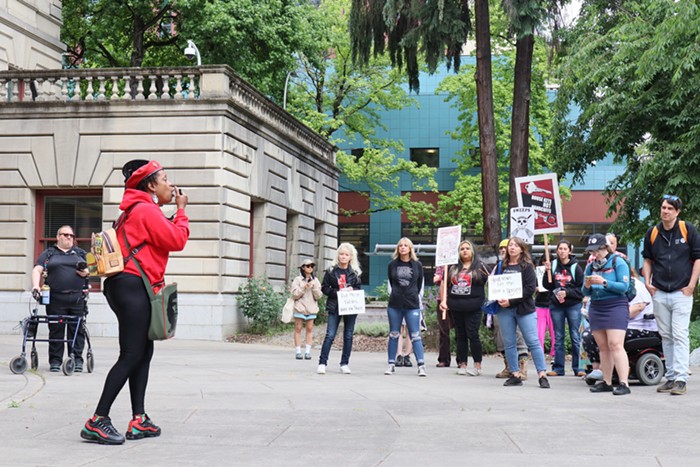The big news yesterday: New Seasons is opening shop on North Williams! Woohoo! Cue excitement over a grocery store opening in the North Portland food desert and 150 new jobs right in inner Portland!
The New Seasons seems to me like a pinnacle of change in the neighborhood—over the past 15 years or so, many long-time residents of the neighborhood have moved to the outskirts of Portland, crime has decreased in the area, property values have increased, and tons of new businesses have opened. In some ways, the history of the site New Seasons will take over on North Williams and Fremont tells the story of change in the neighborhood.
For most of its lifetime, the lot was an industrial center. According to articles in the Oregonian archives, a bakery set up shop at 103 North Ivy Street in 1915. It became a Wonder Bread factory, employing 75 people in the middle of what became—during the first half of the 20th century—a busy street lined with black-owned businesses. Here's a photo of the factory in 1936:

- city archives
The Wonder Bread factory remained standing while the construction of I-5, Memorial Coliseum, and the failed Emanuel Hospital expansion tore down a total 1,550 homes and businesses in the Albina and Boise-Eliot neighborhoods. The factory that once baked bread the middle of a bustling neighborhood was now surrounded by an unfortunate number of vacant lots.
In 2000, Wonder Bread closed up shop, too, consolidating its operations and shutting down the whole factory. In 2007, according to the Oregonian, developer Ben Kaiser purchased the site at a bankruptcy auction and planned to turn the "bakery blocks" into BackBridge Station, a mixed-use development with 41 residential and commercial units. At the time, Boise neighborhood land use chair Chris Sahli told the O that the neighborhood could really use a market. "One thing we could all really agree on is a grocery to talk to," said Sahli.
The developers demolished the Wonder Bread factory but the big development plans fell through. Since then, the site has been sitting empty—a giant eyesore on the street. But while it's lain fallow, the neighborhood around it has continued to change. The market value for the site was $2.85 million, including the land and factory. In 2011, it's worth $5.52 million—nearly double.












